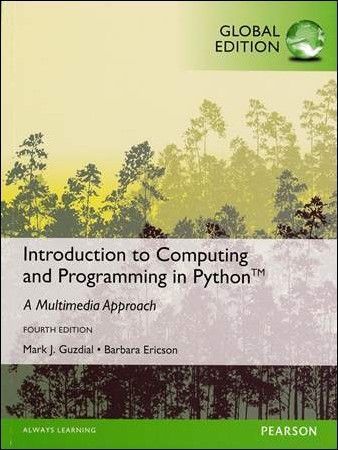書籍分類

Introduction to Computing and Programming in Python 4/e Global Edition
作者:Mark J. Guzdial, Barbara Ericson
原價:NT$ 1,400
ISBN:9781292109862
版次:4
年份:2017
出版商:Pearson Education
頁數/規格:523頁/平裝彩色
參考網頁:Introduction to Computing and Programming in Python 4/e
版次:4
年份:2017
出版商:Pearson Education
頁數/規格:523頁/平裝彩色
參考網頁:Introduction to Computing and Programming in Python 4/e
內容介紹 本書特色 目錄 作者介紹
- Description
Social Computing and Programming with Python
Introduction to Computing and Programming in Python is a uniquely researched and up-to-date volume that is widely recognized for its successful introduction to the subject of Media Computation. Emphasizing creativity, classroom interaction, and in-class programming examples, Introduction to Computing and Programming in Python takes a bold and unique approach to computation that engages students and applies the subject matter to the relevancy of digital media. The Fourth Edition teachesstudents to program in an effort to communicate via social computing outlets, providing a unique approach that serves the interests of a broad range of students.
MyProgrammingLab® not included. Students, if MyProgrammingLab is a recommended/mandatory component of the course, please ask your instructor for the correct ISBN and course ID. MyProgrammingLab should only be purchased when required by an instructor. Instructors, contact your Pearson representative for more information.
MyProgrammingLab is an online homework, tutorial, and assessment product designed to personalize learning and improve results. With a wide range of interactive, engaging, and assignable activities, students are encouraged to actively learn and retain tough course concepts.
分類位置:
資訊 > 程式語言


